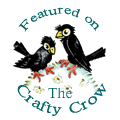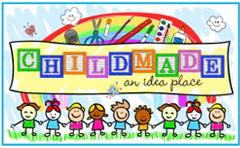Last Easter, Impress Your Kids tried out a color changing, capillary action, carnation activity suggested by Thriving Family Magazine, to illustrate the message of 1 Peter 1: 18-19...
The blood of Christ set you free from an empty way of life. That way of life was handed down to you by your own people long ago. You know that you were not bought with things that can pass away, like silver or gold. Instead, you were bought by the priceless blood of Christ. He is a perfect lamb. He doesn’t have any flaws at all.
...and the concept of Jesus taking our sins on Himself on the cross.
We've certainly investigated capillary action with carnations and food coloring before, but it sounded like a nice Easter themed object lesson, and at the very least an excuse to buy a bouquet of carnations.
I had the children add black food coloring to a small vase (the more food coloring, the better for this sort of experiment).
The original experiment/object lesson called for red food coloring, but I chose black, because I had just replenished our supply of black food coloring, and because it reminds me of the Wordless Book page for sin, and verses like like John 3:19:
This is the verdict: Light has come into the world, but people loved darkness instead of light because their deeds were evil.
T, thought we should have used red dye to represent sin. I reminded him, that red usually represents the blood of Christ (still thinking of the Wordless Book), and so would seem strange in this instance.
He reminded me of the chorus to "Jesus Paid It All" - Sin had left a crimson stain. He washed it white as snow.
Normally I would have said a verse trumps a hymn, but I was glad to know he's been paying attention to what we sing in church - and besides which, that particular hymn, just happens to have been my father's favorite, so he got a full touché...
...and we agreed to disagree - because the black colored water was already in the vase. I pulled the sprig of white flowers out of our bouquet, and we looked at how pure and pretty they were - referencing 1 Peter 1: 18-19.
Then, we put them into the water...
...and watched throughout the day as the colored water moved up the stem turning our beautiful white flower, to a dingy gray, thanks to :
- transpiration - the water molecules evaporating from the stomata on the flower petals, leaving room for more molecules to move up through the xylem or veins (you can see them very clearly on the petals, in the picture at the bottom of this post).
and
- molecular cohesion - the fact that "each end of a water molecule, is attracted to the opposite charged end of another water molecule" causing them in effect, to hold on to each other,
and
- when pushed together into a long tight space (like the xylem of plants), the water molecules holding onto each other, will form a chain, that moves up from the water in the vase, to the ends of the petals, as transpiration takes place (somewhat like the candies in a Pez dispenser) in a process known as capillary action.
Or rather, we watched as our flower turned from white, to red and green, because as we learned by trial and error, with our silver coin cookies, and our salt dough tomb, while we were out of black food coloring - black dye is not really black at all, but a combination of red and green.
And, the fact that molecules of red pigment are carried through the xylem faster than molecules of green, was a lovely bonus review of color chromatography, as well.
Then, with our dingy, not white, flowers in front of us, we read 1 Peter 2:24 -
“He himself bore our sins” in his body on the cross, so that we might die to sins and live for righteousness; “by his wounds you have been healed.”
It's great to be a homeschooler.
Linked with Science Sunday at Adventures in Mommydom.











3 comments:
That is such a cool illustration. I am emailing this to the lady organizing gospel presentations for our Bible clubs this summer.
I'd of gone with black also.
This is a wonderful post. I love the way you have combined science with Easter.
I was just thinking as I was reading that you are not going to get black... Interesting experiment!
Post a Comment